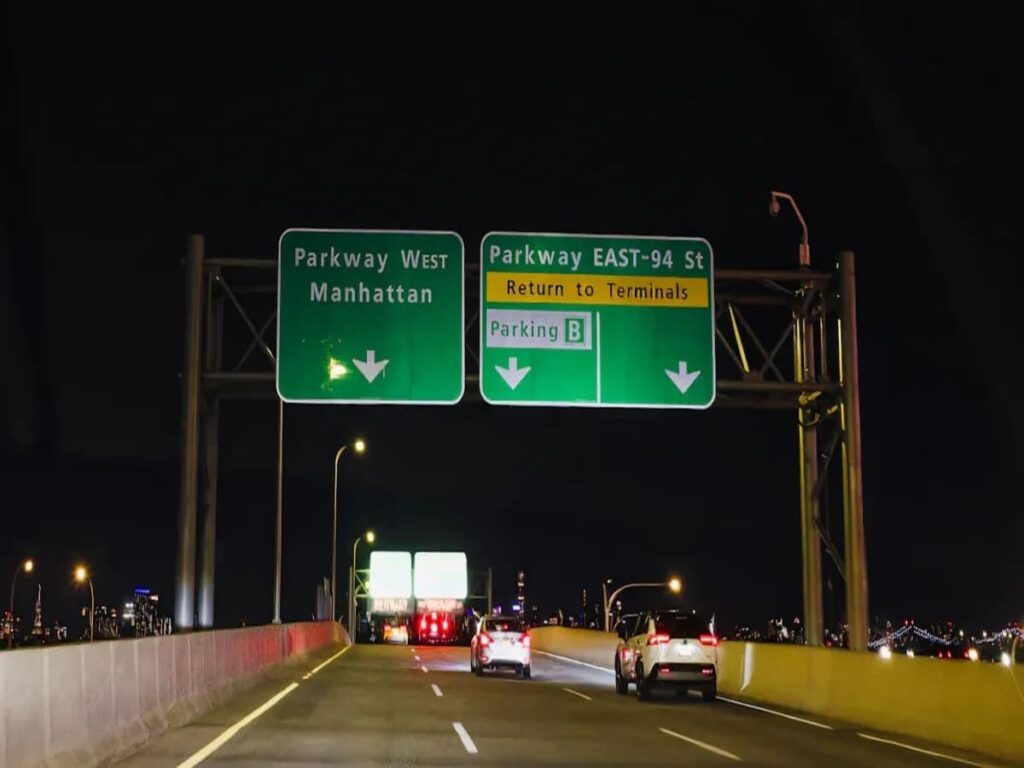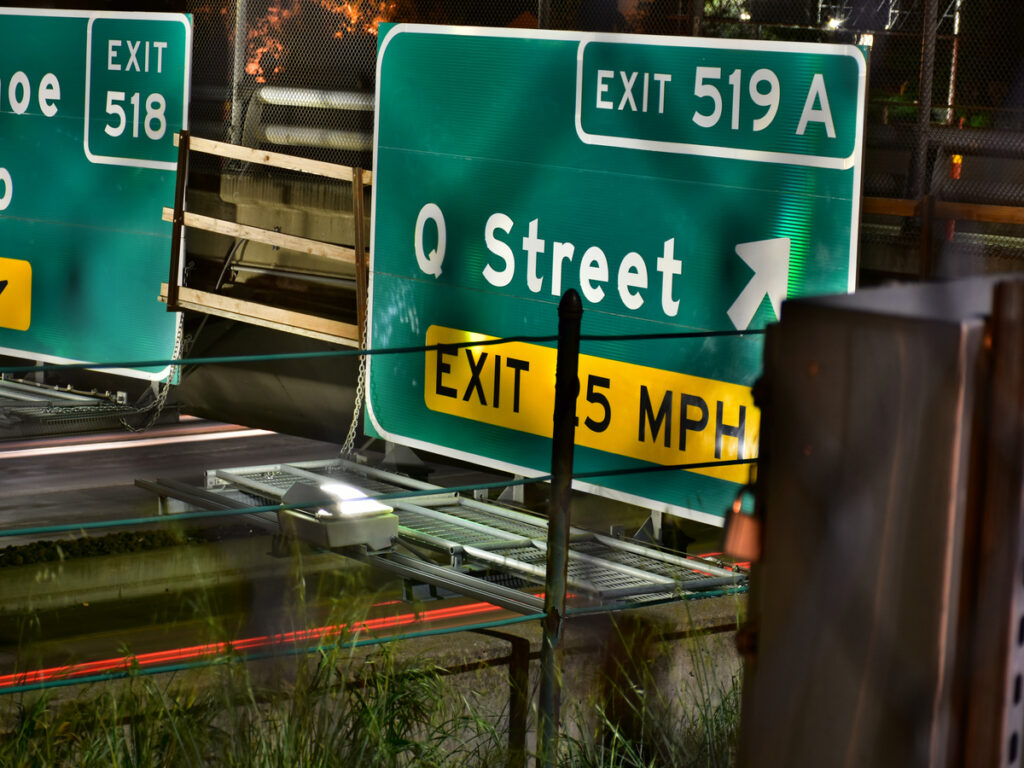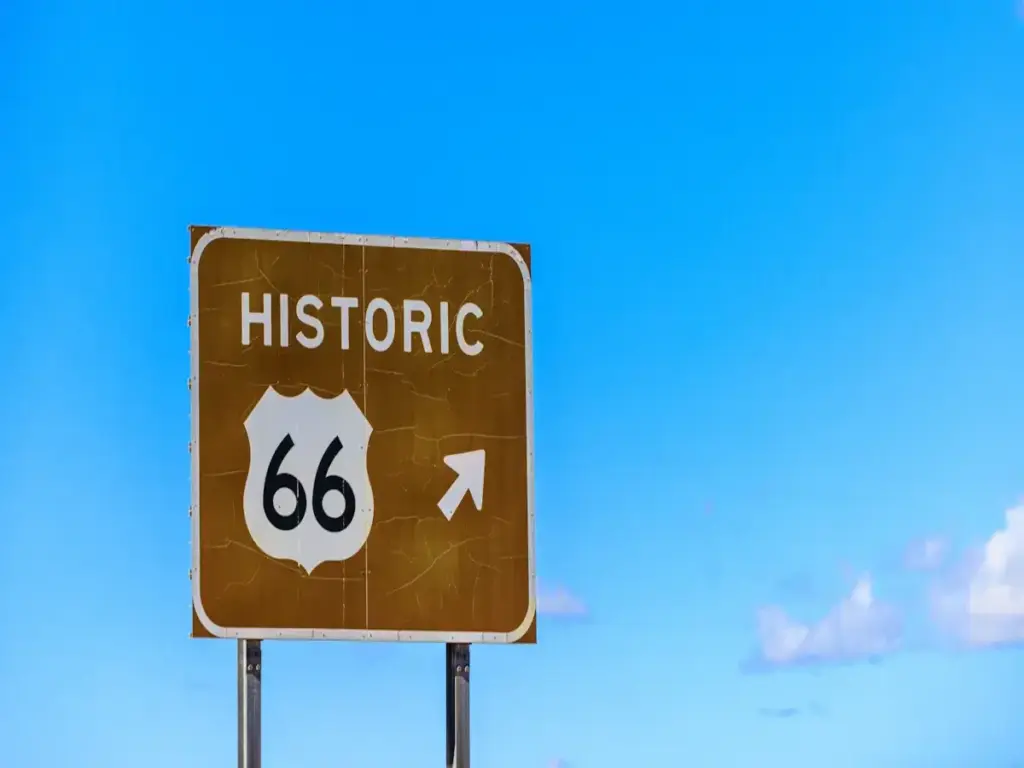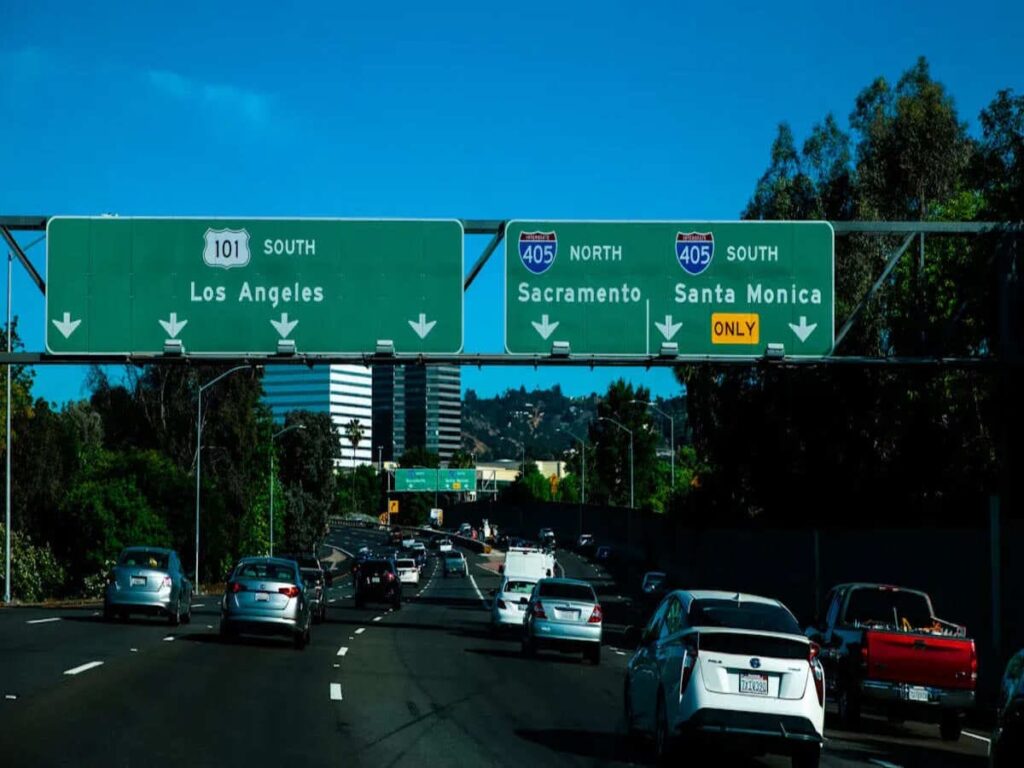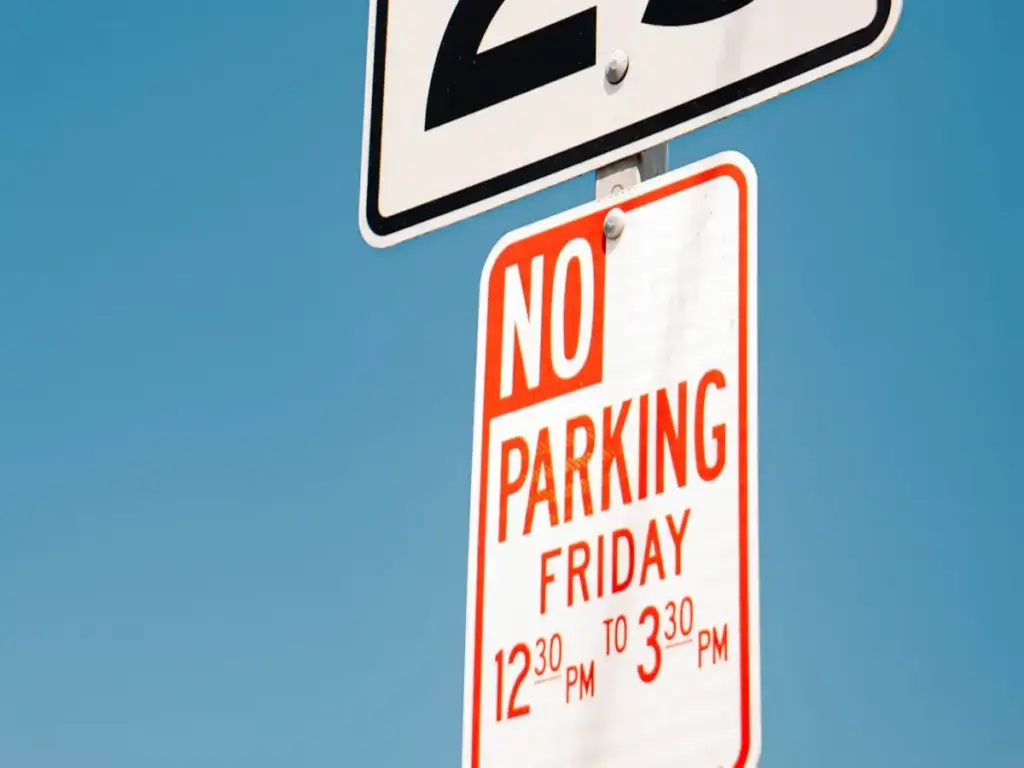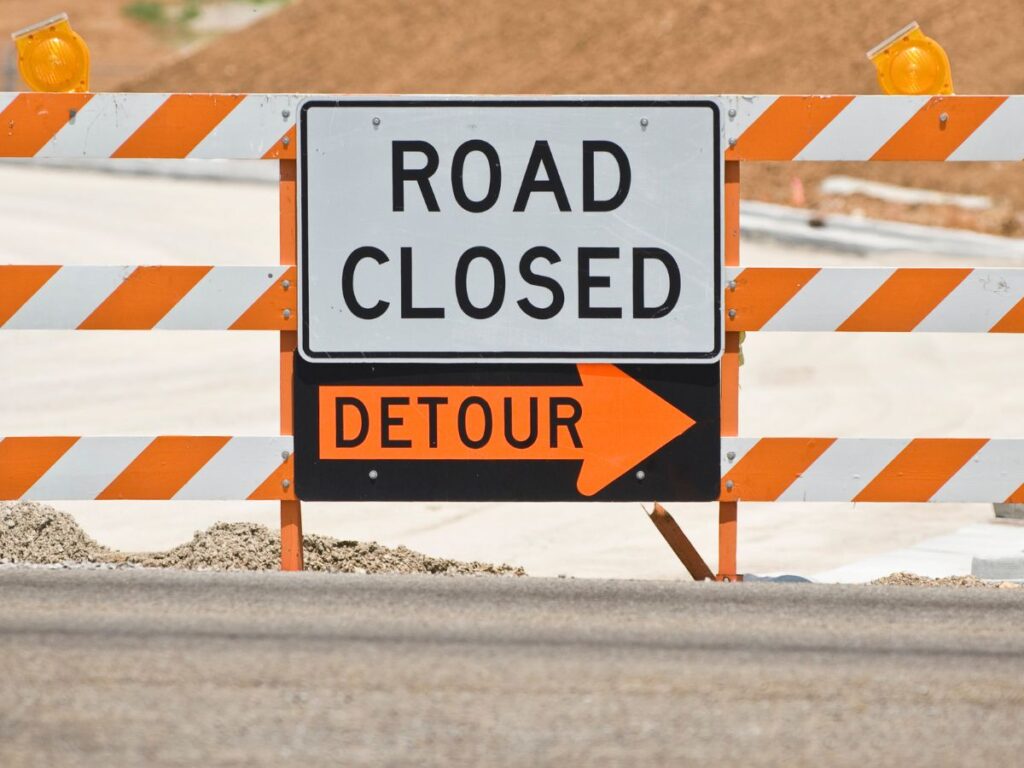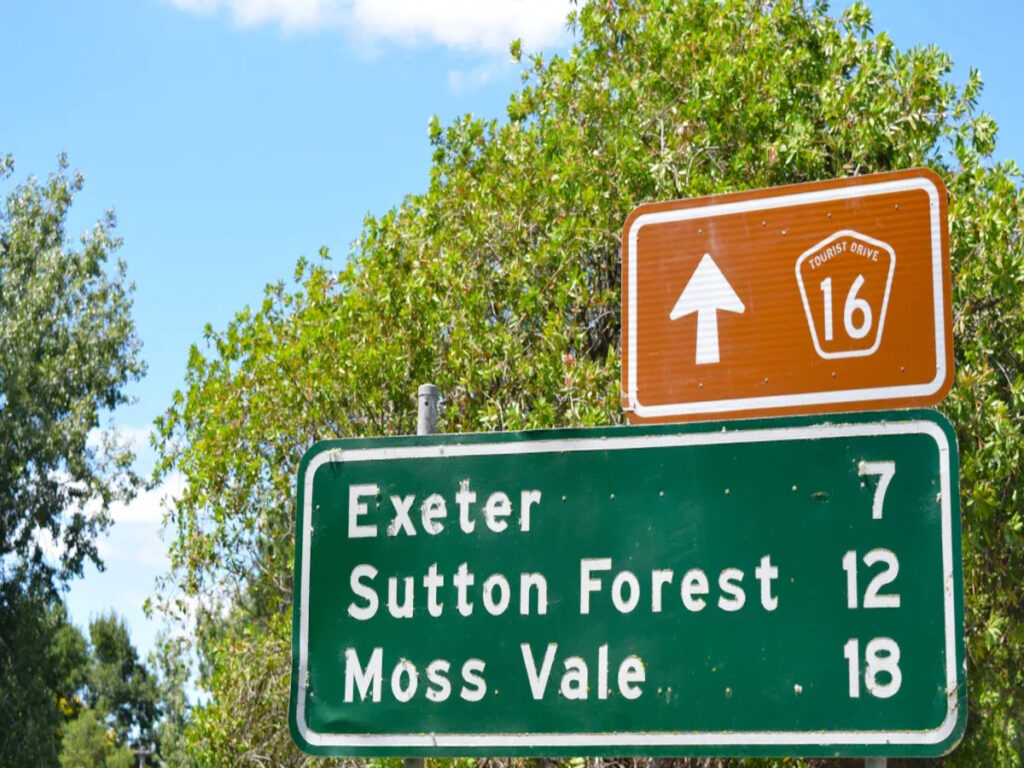
اختيار المواد مهم للغاية للسلامة على الطرق في أستراليا. يستخدم السائقون علامات حركة المرور للبيع كل يوم لمساعدتهم والحفاظ عليها آمنة. الألومنيوم, فُولاَذ, البلاستيك, المركبات, وتساعد الأغطية العاكسة على جعل العلامات آمنة وسهلة رؤيتها. المزيج الصحيح من المواد يجعل علامات المرور القوية. هذا يساعد على إبقاء الناس آمنين على جميع الطرق. يحتاج المشترون إلى التفكير في كيفية تأثير كل مزيج على ظروف السلامة والطريق. يجب أن يفكروا أيضًا في كيفية تأثيره على السلامة بمرور الوقت. خيارات المواد تغير مستقبل علامات المرور للبيع. هذه الخيارات تحدد قواعد السلامة على الطرق في أستراليا.
يوفر Optraffic مجموعة واسعة من المتينة, جودة عالية إشارات المرور مصنوع من أفضل المواد, ضمان الامتثال لمعايير السلامة الأسترالية. تساعد علاماتنا على الحفاظ على الطرق أكثر أمانًا للجميع مع تقديم أداء طويل الأمد.
امتثال
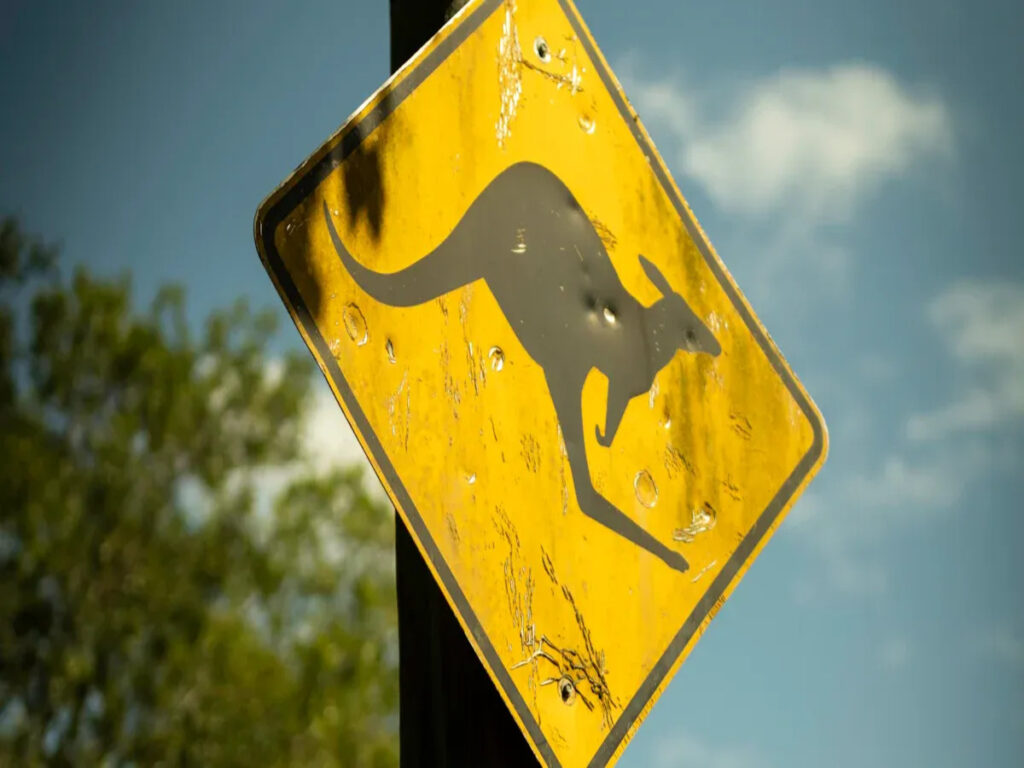
المعايير الأسترالية
يعتمد سلامة الطرق الأسترالية على قواعد صارمة لعلامات المرور للبيع. ال مثل 1742 و AS/NZS 1906 تحدد المعايير قواعد للمواد والانعكاس. تتأكد هذه القواعد. يجب أن تستخدم العلامات مواد عاكسة حتى يتمكن السائقون من رؤيتهم في الليل. بعض علامات المرور, مثل تلك في المناطق المدرسية, تحتاج خلفيات الفلورسنت. تقول القواعد جميع أجزاء العلامة, باستثناء الأسود, يجب أن تكون عاكسة. هذا يتأكد من رؤية السائقين رسائل واضحة في أي طقس أو وقت. يوضح الجدول أدناه المتطلبات الرئيسية:
| جانب المتطلبات | تفاصيل |
|---|---|
| استخدام المواد العاكسة | يجب أن تستخدم العلامات هذه في الليل, باستثناء علامات وقوف السيارات التي قد تحتوي على أضواء. |
| فصول الأغطية العاكسة | اختر بناءً على مكان الإشارة والبيئة. |
| أغطية خلفية الفلورسنت | مطلوب لبعض العلامات, مثل عبور الأطفال. |
| نطاق الانعكاس | جميع الأجزاء باستثناء الأسود يجب أن يكون عاكس. |
| طرق الإضاءة | استخدم الأضواء إذا كان الانعكاس لا يعمل بشكل جيد. |
| مواصفات فئة الأداء | بعض العلامات لها فصل; إذا لم يكن كذلك, اختر بناءً على الاحتياجات. |
تساعد هذه القواعد في الحفاظ على أمان الطرق والتأكد من أن جميع علامات المرور للبيع تلتقي بالهرالية, mash tl3, والمعايير المعتمدة على السلامة النمسوم.
الهيئات التنظيمية
تتأكد المجموعات الحكومية من اتباع قواعد السلامة على الطرق في كل مكان. Vicroads, سلطات المرور في نيو ساوث ويلز, والمجالس المحلية تحقق والموافقة على علامات المرور للبيع. ينظرون إلى المواد العاكسة, كيف يتم إصلاح العلامات, وإذا كانت الرسائل واضحة. أنها تعطي تصاريح, هل الشيكات, إعطاء الغرامات, ويمكن أن تتوقف عن التصاريح. يسرد الجدول أدناه المجموعات الرئيسية وماذا يفعلون:
| الجسم التنظيمي | الاختصاص | إجراءات الإنفاذ الرئيسية | مجالات التركيز الامتثال |
|---|---|---|---|
| Vicroads | فيكتوريا (فيك) | يعطي تصاريح, يتحقق العلامات, غرامات, تعليق | المواد العاكسة, الربط, وضوح الرسالة |
| سلطات المرور في نيو ساوث ويلز | نيو ساوث ويلز | مثل فيك | مثل فيك |
| المجالس المحلية | نيو ساوث ويلز & فيك | يفتش, بخير, تعليق, ترتيب إزالة | إنفاذ, أمان, الإبلاغ |
تتأكد هذه المجموعات من جميع منتجات السلامة على الطرق والمنتجات المعتمدة من الهريس تلبية معايير السلامة. كما يقومون بفحص التقارير من الجمهور ويقومون بفحوصات منتظمة للحفاظ على سلامة الطرق.
أغطية عاكسة
أغطية عاكسة مهم جدا للسلامة على الطرق. يساعد السائقين على رؤية علامات في الليل أو في الطقس السيئ. تقول القواعد لاستخدام MASH المعتمدة, Mash TL3, والمواد العاكسة المعتمدة على السلامة النمسوم. تتأكد الألواح الجيدة من علامات المرور للبيع قواعد السلامة وإصدار الشهادات. هذا التركيز على الانعكاس يساعد. تقنية الأغطية العاكسة تتحسن, لذا فإن منتجات السلامة على الطرق تعمل بشكل جيد للجميع.
خيارات المواد
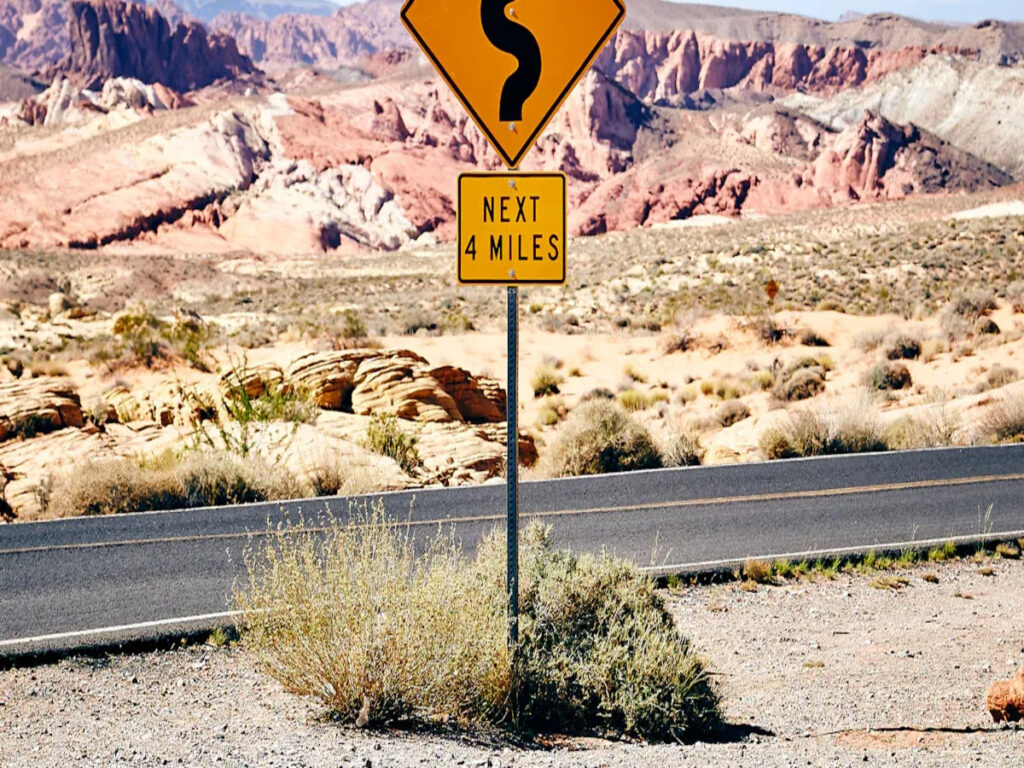
تختار سلطات الطرق الأسترالية مواد لعلامات المرور بعناية. ينظرون إلى المدة التي تستغرقها المواد, ما مدى سهولة رؤيته, وإذا كانت جيدة للبيئة. مواد جيدة تساعد العلامات على البقاء آمنة ومفيدة للجميع. كل مادة تعمل بشكل أفضل في أماكن مختلفة وللوظائف المختلفة.
الألومنيوم
الألومنيوم هو الخيار الأفضل لمعظم علامات المرور الدائمة في أستراليا. لا يصدأ أو يتلاشى, حتى عندما يكون الطقس سيئًا. الألومنيوم خفيف, لذلك من السهل حملها وتوضيحها. إنه قوي و يمكن التعامل مع رياح قوية وأمطار غزيرة. يتيح السطح الأملس للعمال إضافة رسومات واضحة. هذا يبقي الرسائل سهلة القراءة. بعض أنواع الألومنيوم لا تشتعل بسهولة. سلطات الطرق مثل الألومنيوم لأنها لا تحتاج إلى الكثير من الرعاية. كما أنه يستمر لفترة طويلة. هذا يجعلها خيارًا جيدًا لتوفير المال على الطرق.
نصيحة: يمكن إعادة تدوير الألومنيوم, مما يساعد على حماية البيئة.
فُولاَذ
فُولاَذ قوي جدا ويستخدم لعلامات في أماكن مزدحمة أو محفوفة بالمخاطر. قد يستغرق الأمر علامات صعبة ويحمل علامات كبيرة أو مهمة بشكل جيد. غالبًا ما تحصل علامات الصلب على طلاء خاص لوقف الصدأ, خاصة بالقرب من البحر أو في المناطق الرطبة. الصلب أثقل من الألمنيوم ولكنه لا يزال اختيارًا جيدًا عند الحاجة إلى قوة إضافية. أحيانا, يتم استخدام الصلب في المنشورات أو الأقواس التي تحمل علامات.
البلاستيك
البلاستيك مثل لوحة رغوة Corflute و PVC للعلامات التي لا تظل مستيقظًا لفترة طويلة. هذه العلامات شائعة في مواقع البناء أو عند حدوث أعمال الطرق. البلاستيك خفيفة وسهلة القطع, لذا فإن صنع العلامات وطرحها سريعة. لكن الشمس الأسترالية الساخنة يمكن أن تجعل المواد البلاستيكية تنحني أو تنكسر بمرور الوقت. معظم المواد البلاستيكية تستمر أقل من خمس سنوات في الخارج. هذا يعني أنها ليست جيدة للعلامات التي يجب أن تستمر لفترة طويلة. يستخدم مديرو الطرق البلاستيك عندما يريدون توفير المال للوظائف القصيرة.
المركبات
المركبات, مثل المواد المركبة من الألومنيوم والألياف الزجاجية, امزج الأجزاء الجيدة من المعادن والبلاستيك. ألواح ACM لا تتضرر من الشمس أو الماء. يستمرون في الظهور جيدًا ويظلون قويين لأكثر من خمس سنوات. هذه اللوحات خفيفة, قاسٍ, ولا تنحني أو تنكسر في الطقس السيئ. تبدو المركبات أنيقة وتستخدم للعلامات التي تبقى لفترة طويلة أو متوسطة. إنها تدوم طويلاً وأفضل للبيئة, لذلك فهي اختيار ذكي لعلامات الطرق الجديدة.
وود وغيرها
كان الخشب مرة واحدة المادة الرئيسية لعلامات الطريق. الآن, يتم استخدام مواد أفضل لأنها تدوم لفترة أطول وأكثر أمانًا. يستخدم الخشب في الغالب في المناطق الريفية أو الأماكن ذات الطراز القديم لتتناسب مع المظهر. مواد أخرى, مثل المواد البلاستيكية المعاد تدويرها أو مركبات جديدة, يتم محاكمتها كخيارات أكثر خضرة. تساعد هذه الخيارات الجديدة على خفض الأذى بالبيئة ولكن لا تزال تبقي العلامات آمنة وسهلة رؤيتها.
المتانة ومقارنة العمر
يوضح الجدول أدناه المدة التي تدوم فيها المواد المختلفة ومدى قوتها:
| نوع المواد | تصنيف المتانة / العمر المتوقع | الخصائص الرئيسية & ملحوظات |
|---|---|---|
| البلاستيك المموج (corflute) | على المدى القصير (~ 3 أشهر) | رخيص, جيد للوظائف القصيرة مثل بناء المواقع; يمكن أن ينحني أو كسر الشمس والطقس. |
| المواد البلاستيكية القياسية (على سبيل المثال, لوحة رغوة PVC) | أقل من 5 سنين | يمكن أن ينحني في الحرارة; ليست قوية جدًا للاستخدام في الهواء الطلق في الطقس القاسي. |
| مادة مركبة الألومنيوم (ACM) | غالي, 5+ سنين | لا يتضرر من الشمس أو الماء, ضوء, قاسٍ; تستخدم للعلامات الخارجية; لا ينحني أو يكسر; تبدو أنيقة. |
| علامات معدنية (على سبيل المثال, الألومنيوم) | عدة سنوات (5+ السنوات ضمنية) | يبقى قويا في الشمس والمطر; غالبًا ما يكون له طلاء خاص; يستمر وقت طويل. |
| رسومات الفينيل (البوليمرية) | 5-7 سنوات | فينيل جيد للعلامات في الخارج; لا يتقلص أو الكراك; تستخدم للف وعلامات السيارة. |
| رسومات الفينيل (أحادي) | 2-3 سنوات | أرخص, فينيل قصير الأجل; يمكن أن تقشر أو يتقلص بعد بضع سنوات. |
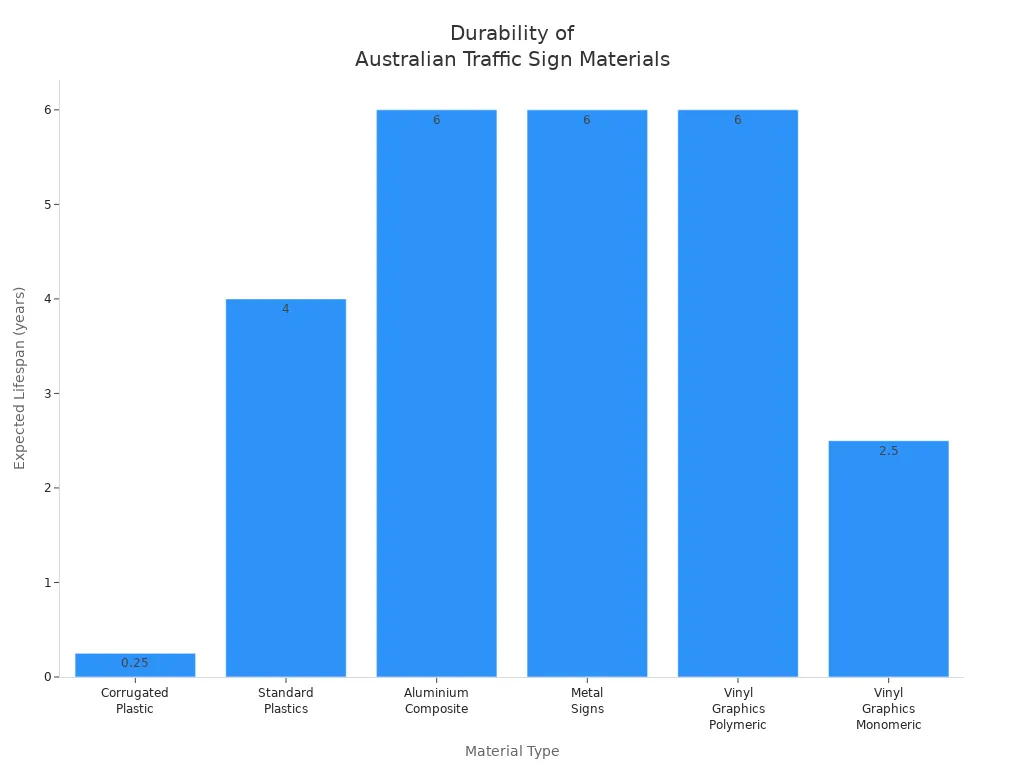
ملحوظة: إن اختيار المواد الجيدة المناسبة لكل علامة يبقي الناس آمنين, يجعل العلامات الأخيرة, ويتبع القواعد الأسترالية. إذا كنت ترغب في معرفة المزيد حول كيفية تأثير المواد المختلفة على السلامة والأداء, اقرأ مدونتنا: أي مادة مناسبة لك? مقارنة علامات السلامة للبيع: الألومنيوم مقابل البلاستيك مقابل المغناطيسي.
ابتكار
المواد الذكية
تستخدم سلطات الطرق الأسترالية مواد ذكية لجعل العلامات أفضل. تساعد المعادن المقاومة للصدأ والإطارات المركبة على علامات تدوم لفترة أطول في الطقس القاسي. تتيح التصميمات المعيارية للعمال تبديل الأجزاء المكسورة بسرعة. هذا يوفر المال ويقلل من النفايات. تحتوي بعض العلامات على أجهزة استشعار تتسبب في تلف أو تغيير الرسائل على الفور. تساعد هذه الميزات في الحفاظ على آمنة الطرق وتلبية الاحتياجات الجديدة. مواد صديقة للبيئة, مثل المعادن المعاد تدويرها, قوية وطول طويل. كما أنها تساعد في حماية الكوكب. 3D طباعة تجعل قوية, إطارات الضوء مع نفايات أقل.
- تساعد المعادن والمركبات المقاومة للصدأ على علامات تستمر لفترة أطول.
- الإطارات المعيارية تجعل الإصلاحات وتغيير حجمها بسيطة.
- يعطي أجهزة الاستشعار وميزات إنترنت الأشياء تحديثات على الفور.
- المواد المعاد تدويرها والطباعة ثلاثية الأبعاد تساعد البيئة.
علامات الرقمية وإنترنت الأشياء
العلامات الرقمية و تكنولوجيا إنترنت الأشياء تغيير كيف تحصل برامج التشغيل على المعلومات. يمكن لعلامات مع أجهزة الاستشعار اكتشاف تغييرات حركة المرور أو الطقس وتحديث الرسائل بسرعة. هذا يساعد السائقين على التصرف بشكل أسرع ويبقي الطرق أكثر أمانًا. يربط إنترنت الأشياء علامات للسيارات وأنظمة المدينة الذكية. هذا يجعل حركة المرور أسهل في الإدارة. يمكن أن تحدد الشيكات الآلية متى تحتاج العلامات. هذا يعني انخفاض وقت التوقف والطرق الأكثر أمانًا.
التقنيات العاكسة المتقدمة
تستخدم العلامات الحديثة أفلامًا عاكسة جديدة لمساعدة السائقين على المشاهدة في الليل أو في الطقس السيئ. الأغطية micromormatic, مثل درجة الماس DG3, يجعل العلامات أكثر إشراقًا وأسهل اكتشافها من بعيدًا. تستخدم بعض العلامات مصابيح LED التي تعمل بالطاقة البطارية للحصول على سطوع إضافي. هذه جيدة للمناطق المدرسية أو المعابر المزدحمة. علامات ضوئية تمتص أشعة الشمس في النهار وتتوهج في الليل. هذا يساعد السائقين في المناطق الريفية بدون ضوء الشوارع. تساعد هذه الأفكار الجديدة على إيقاف الحوادث والحفاظ على الجميع آمنة.
| التكنولوجيا العاكسة | الفائدة الرئيسية | حالات الاستخدام الشائعة |
|---|---|---|
| الأغطية micromormatic | مشرق جدا وواضح | علامات السرعة, المناطق المدرسية |
| علامات LED-ALUMUNINTING | تضيء, يحذر السائقين | المعابر, المناطق المزدحمة |
| لافتات ضوئية | يضيء في الليل, لا حاجة للسلطة | الطرق الريفية, معابر السكك الحديدية |
الممارسات المستدامة
توجه الممارسات المستدامة الآن كيفية صنع العلامات في أستراليا. يستخدم صناع البلاستيك المعاد تدويره لخفض النفايات. المركبات القابلة للتحلل والطلاء الآمن مساعدة البيئة. الأضواء التي تعمل بالطاقة الشمسية والعلامات الرقمية توفر الطاقة وخفض التلوث. تساعد هذه الخطوات على علامات تستمر لفترة أطول, تكلفة أقل, وتلبية القواعد الخضراء. عن طريق اختيار المواد والطرق المستدامة, تساعد الصناعة في جعل أستراليا منظفًا وأكثر خضرة.
ملحوظة: المواد والتكنولوجيا الجديدة في علامات تجعل الطرق أكثر أمانًا, أكثر مرونة, وأفضل للبيئة.
التأثير البيئي
دورة الحياة
تدوم علامات المرور للبيع في أستراليا لأوقات مختلفة. هذا يعتمد على ما يصنعونه وأين يتم استخدامهم. معظم العلامات تبقى جيدة ل 7 ل 15 سنين. يمكن أن تستمر العلامات ذات الأغطية الدقيقة من الدرجة الماسية أكثر من 18 سنين. قد تحتاج علامات مع صفوف الصف المهندس إلى التغيير بعد حوالي 7 سنين. تقوم سلطات الطرق بفحص العلامات كل عام. ينظرون إلى مدى سطوع وتوضيح العلامات. يتم استبدال العلامات بعد 10 ل 15 سنوات أو عاجلاً إذا كان من الصعب رؤيتها. علامات في أماكن صعبة, مثل بالقرب من البحر أو في الصحارى, بحاجة إلى التغيير عاجلا. الطلاء الخاص, مثل المعاطف العلوية المقاومة للأشعة فوق البنفسجية, تساعد علامات تستمر لفترة أطول. هذه الطلاء تتوقف عن التلاشي والأضرار.
- صفوف الصف المهندس: عن 7 سنين
- أغطية منشورية عالية الكثافة: 10-12 سنة
- أغطية الدرجات الماسية: 12-18+ سنة
إعادة التدوير
تحاول وكالات الطرق الأسترالية إعادة التدوير لصنع مضيعة أقل. علامات الألومنيوم بسيطة لإعادة التدوير وغالبًا ما تعتاد مرة أخرى. يتم أيضًا إعادة تدوير الوظائف الفولاذية والأقواس. يمكن إعادة تدوير بعض المواد البلاستيكية والمركبات, لكن ليس كل المجالس تأخذها. إعادة التدوير تعني الحاجة إلى مواد جديدة وأقل من القمامة في مدافن النفايات. العديد من صانعي التصميم الآن لعلامات حتى يسهل إعادة التدوير. هذا يجعل من السهل فرز ومعالجة الأجزاء عندما تكون العلامات قديمة.
بصمة الكربون
تعتمد بصمة الكربون لعلامات المرور على ما يصنعون منه وإلى أي مدى يسافرون. إن صنع الألمنيوم والصلب يستخدم الكثير من الطاقة. لكن إعادة تدوير هذه المعادن تستخدم طاقة أقل بكثير من صناعة جديدة. يساعد استخدام المواد المعاد تدويرها في قطع انبعاثات غازات الدفيئة. يضيف النقل وطرح العلامات أيضًا إلى بصمة الكربون. الحصول على المواد محليًا واستخدام علامات أخف يساعد على انخفاض الانبعاثات. يعني استخدام المواد المستقرة للأشعة فوق البنفسجية في أماكن مثل Queensland أن العلامات تدوم لفترة أطول. هذا يعني عددًا أقل من البدائل وتأثير كربون أقل.
شهادات خضراء
تُظهر الشهادات الخضراء منتجًا يفي بقواعد بيئية صارمة. في أستراليا, يحصل بعض صانعي علامات المرور على شهادات مثل ISO 14001 لرعاية البيئة. تُظهر هذه الشهادات أن الشركات تستخدم طرقًا خضراء, إعادة تدوير, وجعل تلوث أقل. يمكن للمشترين اختيار منتجات معتمدة لمساعدة البيئة وتحقيق الأهداف الخضراء الحكومية.
ملحوظة: اختيار المواد التي تستمر طويلا, يمكن إعادة تدويرها, ولديها شهادات خضراء تساعد البيئة وتجعل الطرق أكثر أمانًا وأكثر خضرة.
علامات المرور للبيع: اعتبارات المشتري
الامتثال وشهادة
يحتاج المشترون إلى التأكد من أن علامات الطرق تتبع قواعد السلامة. تسمح سلطات الطرق الأسترالية فقط بالمنتجات المعتمدة من Mash على الطرق العامة. يجب أن تجتاز هذه المنتجات اختبارات القوة, الانعكاس, وما مدى سهولة رؤيتها. يجب على المشترين دائمًا أن يطلبوا من الموردين أوراقًا مهمة. وتشمل هذه الامتثال ASTM للألواح, ISO 9001 للجودة, و الهيئة الفيدرالية للطرق السريعة (FHWA). رسائل لمواد إعادة العفل. يجب على الموردين أيضًا إعطاء أوراق بيانات المواد, نتائج اختبار الانعكاس, وسجلات الدُفعات. توضح هذه الأوراق أن العلامات آمنة ولها الألوان والتشطيبات المناسبة.
تتضمن قائمة مراجعة المشتري:
- طلب أوراق معتمدة من الهريس والهرمي.
- التحقق من ISO 9001 و ASTM الامتثال.
- النظر في نتائج اختبار الانعكاس وعينات الألوان.
- التأكد من أن الدُفعات هي نفسها والتحقق من تفاصيل الضمان.
- يسأل عن المساعدة في التثبيت وكم من الوقت يستغرق التسليم.
نصيحة: اختر دائمًا الموردين الذين يقدمون شهادة كاملة وأوراق واضحة. هذا يساعدك على متابعة قواعد السلامة على الطرق وقوانين الحكومة.
اختيار المواد
المواد التي تختارها تتغير مدى أمانها, قوي, ومكلفة علامة. الألومنيوم هو الأفضل لعلامات الطرق الدائمة لأنها قوية ولا تصدأ. الصلب مفيد للعلامات الكبيرة أو الصعبة, خاصة على الطرق المزدحمة. المواد البلاستيكية والمركبات أفضل للعلامات أو الأماكن قصيرة الأجل مع خطر أقل. يجب على المشترين مطابقة المواد مع المكان الذي ستذهب فيه العلامة والوقت الذي يجب أن تستمر فيه.
جدول يساعد المشترين على الاختيار:
| نوع المواد | أفضل استخدام | متانة | موافقة المهجس | التأثير البيئي |
|---|---|---|---|---|
| الألومنيوم | علامات الطريق الدائمة | عالي | نعم | قابل لإعادة التدوير |
| فُولاَذ | الطرق العالية | عالية جدا | نعم | قابل لإعادة التدوير |
| البلاستيك | أعمال الطرق المؤقتة | واسطة | أحيانا | يختلف |
| المركبات | على المدى الطويل, الطقس القاسي | عالي | نعم | تحسن |
يجب على المشترين دائمًا التحقق من أن المواد معتمدة من الهريس وتلبية قواعد السلامة. هذا يتأكد من أن العلامات تعمل بشكل جيد والحفاظ على آمنة الناس.
الخيارات البيئية
أصبح رعاية البيئة أمرًا مهمًا جدًا عند شراء علامات الطرق. يجب على المشترين اختيار العلامات المصنوعة من مواد معاد تدويرها أو إعادة استخدامها لمساعدة الكوكب. المواد القوية والقابلة لإعادة الاستخدام تجعل أقل من النفايات وتوفير أموال المجالس. قواعد الحكومة الأسترالية, مثل الدليل الوطني للسياسة النفايات وشراء البيئة, أخبر المشترين باختيار المنتجات التي تقلل من غازات الدفيئة واستخدام أقل طاقة.
الأشياء الرئيسية للتفكير في البيئة:
- اختر العلامات المصنوعة من الألومنيوم أو الصلب المعاد تدويره.
- اختر منتجات معتمدة من Mash تستمر لفترة أطول وتحتاج إلى تغييرات أقل.
- دعم الموردين الذين يستخدمون قواعد الشراء الأخضر.
- تأكد من أن المنتجات تتناسب مع أهداف النفايات الحكومية.
ملحوظة: يساعد الشراء بطريقة خضراء على الكوكب والوظائف المحلية. المشترين الذين يختارون الصديق للبيئة, تساعد علامات الطرق المعتمدة على أستراليا على الوصول إلى أهداف النفايات والانبعاثات.
التكلفة والتوافر
التكلفة ومدى سهولة الحصول على علامات مهمة لكل مشتري. يجب على المشترين موازنة السلامة والقواعد بميزانيتهم. قد تكلف المنتجات المعتمدة من Mash أكثر في البداية ولكن توفير المال لاحقًا لأنها تدوم لفترة أطول وتحتاج إلى تغييرات أقل. يمكن للموردين المحليين توصيل أسرع ويساعدون أكثر من خلال طرح علامات واعتناءهم. يجب على المشترين أن يسألوا عن أوقات التسليم, تشابه الدُفعات, والضمان قبل الشراء.
طريقة بسيطة لإدارة التكاليف:
- قارن أسعار المهروسة المعتمدة والمعتمد من الهريس.
- تحقق مما إذا كانت المواد متوفرة والمدة التي تستغرق التسليم.
- انظر إلى الضمان ومساعدة ما بعد البيع.
- فكر في التكلفة الإجمالية, ليس فقط السعر الأول.
المشترين الذين يهتمون بالجودة, قواعد, والبيئة تتخذ خيارات أفضل للسلامة على الطرق.
الاتجاهات المستقبلية
لافتات ذكية
اللافتات الذكية تغير كيفية إدارة الطرق في أستراليا. تحتوي هذه العلامات على أجهزة استشعار وشاشات رقمية. يعطون تحديثات السائقين على الفور. يرى السائقون تحذيرات حول المخاطر, حدود السرعة, أو الطقس. هذا يساعد الناس على الرد بسرعة والبقاء آمنين. تعمل اللافتات الذكية مع الأنظمة المعتمدة من Mash. هذا يعني أنه يتبع قواعد سلامة صارمة. بعض العلامات ترتبط بمراكز مراقبة حركة المرور. يمكن للمشغلين تغيير الرسائل بسرعة. هذا يحافظ على تحديث المعلومات ويساعد في حالات الطوارئ. اللافتات الذكية تجمع البيانات أيضًا. يستخدم المخططون هذه البيانات لإيجاد علامات أفضل في المستقبل. هذا يجعل الطرق أكثر أمانًا للجميع.
مواد صديقة للبيئة
يستخدم صانعو الأستراليون الآن مواد صديقة للبيئة لعلامات المرور. يستخدمون الألومنيوم والصلب المعاد تدويره لخفض التلوث. العديد من العلامات قد وافقت على الأغطية العاكسة التي تدوم لفترة أطول. هذا يعني أن هناك علامات أقل تحتاج إلى استبدال وأقل نفايات. بعض الشركات تحاول المركبات القابلة للتحلل البيولوجي للحصول على علامات قصيرة الأجل. هذه المواد تنهار بأمان بعد الاستخدام. يساعد استخدام المواد الصديقة للبيئة على تلبية قواعد الحكومة. كما أنه يحمي البيئة. تختار المجالس والعمال هذه العلامات لإظهار أنهم يهتمون بالسلامة والخيارات الخضراء. تساعد العلامات الصديقة للبيئة في بناء الثقة في المجتمع. يلتقيون أيضًا بما يتوقعه الناس للطرق الآمنة والخضراء.
الأنظمة المعيارية
أنظمة اللافتات المعيارية أصبحت الآن أكثر شيوعًا في أستراليا. هذه الأنظمة لها أجزاء منفصلة لكل قسم من العلامة. يوفر الموردون المحليون هذه الأنظمة, لذا فإن الإصلاحات سهلة. العمال يغيرون الأجزاء المكسورة فقط, ليس العلامة بأكملها. هذا يوفر الوقت والمال على الإصلاحات. الوحدات النمطية الخالية من الأدوات تعني أن الفرق تعمل بشكل أسرع وأكثر أمانًا. LED modules last longer and make signs safer. The modular design also helps the environment. Only broken parts are replaced, لذلك هناك نفايات أقل. These systems can be changed easily. Teams can add solar panels, كاميرات, or sensors when needed. Remote checks let staff find problems without going to the site. Suppliers always have spare parts ready. Councils use modular signs for quick set-up in work zones and emergencies. Tools like GIS help track signs and plan upgrades. Modular systems help mash approved signs last longer and save money over time.
ملحوظة: Future trends in mash approved signage focus on safety, being green, and being flexible. These new ideas help Australia build safer and better roads.
The materials used for traffic signs affect their future in Australia. Buyers need to think about rules, new ideas, والبيئة. تقدم Veolia Australia و New Zealand أدوات لمساعدة المشترين على الاختيار جيدًا. مدونة قواعد سلوك المورد الخاصة بهم وخطة Greenup تساعد الموردين على التصرف بطرق جيدة وخضراء.
إذا تعلمت عن القواعد والأفكار الجديدة, يمكنك المساعدة في جعل الطرق أكثر أمانًا وأفضل للجميع في أستراليا.
التعليمات
ما هي المواد التي تفضلها سلطات الطرق الأسترالية لعلامات المرور الدائمة?
تختار سلطات الطرق الأسترالية في الغالب الألومنيوم للحصول على علامات دائمة. الألومنيوم لا يصدأ ويسلمه. يستمر وقتًا طويلاً على الطرق. هذه المادة تتيح للعمال إضافة رسومات واضحة. كما أنه من السهل إعادة التدوير. هذا يجعل الألومنيوم خيارًا جيدًا لمعظم الطرق.
كيف تعمل الأغطية العاكسة على تحسين سلامة الطرق?
الأغطية العاكسة تساعد السائقين على رؤية علامات في الليل أو في المطر. يجعل العلامات أكثر إشراقًا وأسهل في تحديد موقعها. يمكن للسائقين قراءة رسائل مهمة بشكل أكثر وضوحًا. هذا يساعد على وقف الحوادث على الطريق. ورقة جيدة, مثل الأفلام الدقيقة, يحافظ على علامات مشرقة لسنوات.
هي علامات مرورية صديقة للبيئة للبيع متوفرة في أستراليا?
نعم, تبيع العديد من الشركات الآن علامات المرور الصديقة للبيئة. تستخدم هذه العلامات المعادن المعاد تدويرها أو الطلاء الخاص. تستخدم بعض العلامات المركبات القابلة للتحلل الحيوي. تختار المجالس والبنائين هذه العلامات لمساعدة البيئة. كما أنها تساعد في تقليل نفايات المكب.
ما هي الشهادات التي يجب على المشترين التحقق منها قبل شراء علامات حركة المرور?
يجب على المشترين التحقق من موافقة المهروس و ISO 9001 شهادة. يجب عليهم أيضًا البحث عن AS 1742 و AS/NZS 1906 امتثال. هذه علامات المرور المعروضة للبيع آمنة وجودة جيدة. تلبي العلامات أيضًا قواعد الانعكاس في أستراليا.
يمكن إعادة تدوير علامات المرور التالفة?
يمكن إعادة تدوير معظم علامات الألومنيوم والصلب بعد الاستخدام. تساعد إعادة التدوير في تحقيق القليل من النفايات ودعم الأهداف الخضراء. يمكن إعادة تدوير بعض المواد البلاستيكية والمركبات أيضًا. هذا يعتمد على ما يمكن أن يأخذه المجلس المحلي الخاص بك.

